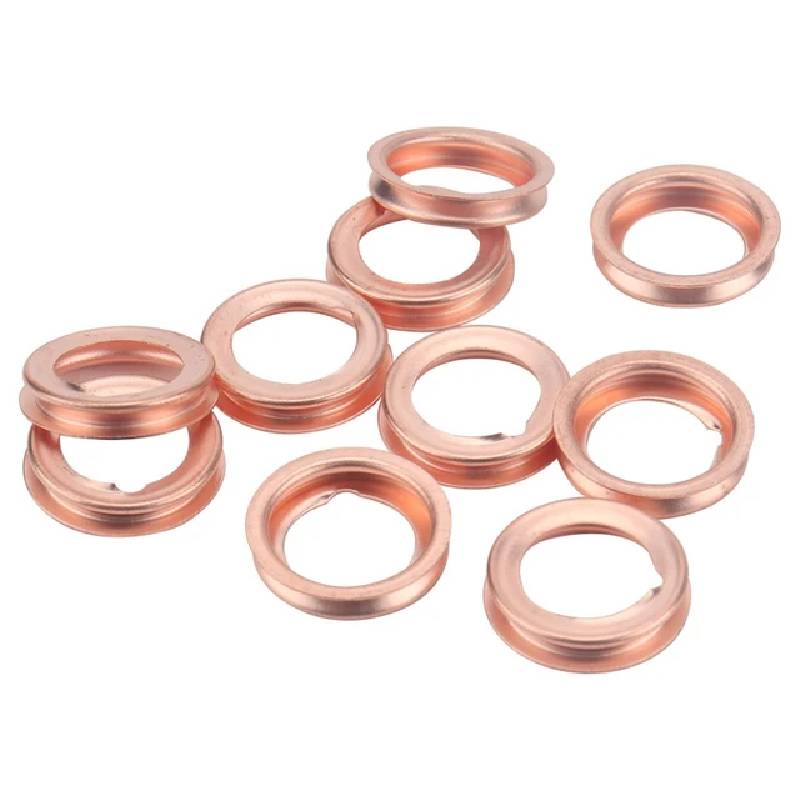Understanding Oil Seal Dimensions for Optimal Mechanical Performance and Sealing Effectiveness
Understanding Oil Seal Dimensions Importance and Applications
Oil seals, also known as radial lip seals, are crucial components in various mechanical systems, such as automotive engines, industrial machinery, and aerospace applications. Their primary function is to prevent the leakage of lubricants while protecting the internal parts from contaminants. Given their essential role, the dimensions of oil seals are critical to their effectiveness and performance.
Key Dimensions of Oil Seals
When discussing oil seal dimensions, several key measurements come into play
1. Inner Diameter (ID) This is the internal diameter of the oil seal, which needs to fit snugly around the shaft or spindle. An accurate ID is vital to ensure that the seal performs its function without leaks or failures.
2. Outer Diameter (OD) The outer diameter is the diameter of the part that fits into the housing or bore. A proper OD ensures that the seal is securely positioned and can withstand operational pressures.
3. Width/Thickness This measurement refers to how thick the oil seal is. A well-designed width is necessary to maintain contact with the shaft throughout its rotation, preventing fluid escape.
4. Lip Profile The design of the sealing lip—its angle, shape, and material—affects the seal's flexibility and its ability to adapt to various contaminants. Different applications may require different lip profiles to effectively combat wear and resist the ingress of dirt and moisture.
5. Material Thickness The material's thickness directly influences its durability and flexibility. Thicker materials can endure higher pressures and harsher environments but may sacrifice flexibility. It's essential to strike a balance based on the application requirements.
The Importance of Accurate Dimensions
oil seal dimension

Accurate oil seal dimensions are vital for several reasons
- Leak Prevention An oil seal that does not fit correctly will likely allow lubricants to escape, leading to reduced lubrication, increased friction, and ultimately, potential equipment failure.
- Contaminant Entry Prevention A poorly fitted seal can also permit dirt, dust, and water to enter, which may compromise the integrity of the machinery. Proper dimensions ensure a robust barrier against contaminants.
- Operational Efficiency Correctly sized oil seals contribute to the overall efficiency of machinery. When seals are capable of performing their functions without leaks or wear, equipment can operate smoothly, leading to increased productivity and reduced maintenance costs.
Applications of Oil Seal Dimensions
Oil seal dimensions vary across different applications, reflecting the specifics of the environment in which the seals operate. In automotive applications, dimensions may be optimized for high rotation speeds and varying temperatures, requiring seals that can withstand significant stress without failing. In industrial machinery, the seals might be designed for larger diameters and greater widths to cope with heavier-duty operations.
In aerospace applications, oil seals must adhere to stringent standards to handle extreme pressures and temperatures while maintaining reliability. In all cases, the precise dimensions of oil seals are paramount to ensure functionality and longevity.
Conclusion
Understanding the dimensions of oil seals is crucial for anyone involved in the design, maintenance, or repair of mechanical systems. Accurate inner and outer diameters, width, lip profiles, and material thickness all play integral roles in ensuring that oil seals perform their intended functions effectively. As industries continue to evolve and advance technologically, the significance of precision in oil seal dimensions will remain a fundamental aspect of ensuring the reliability and efficiency of machinery across various sectors. Thus, investing time in selecting the right oil seal dimensions can lead to significant long-term benefits in both performance and cost savings.
-
Understanding Automotive Oil Seals: Essential Components for Engine and Shaft Protection
News Jul.30,2025
-
The Importance of Heavy Duty Seals in Industrial and Residential Applications
News Jul.30,2025
-
Exploring Industrial Oil Seals: From Felt Oil Seals to TTO and CFW Solutions
News Jul.30,2025
-
Essential Guide to Oil Seals: From Radial to Metal-Cased Seals for Industrial Reliability
News Jul.30,2025
-
Choosing the Right Oil Seals and Gaskets for Industrial and Automotive Applications
News Jul.30,2025
-
Cassette Seals: Durable Sealing Solutions for Harsh Environments
News Jul.30,2025
-
Understanding the Front Main Engine Seal: Purpose, Maintenance, and Installation
News Jul.29,2025
Products categories















